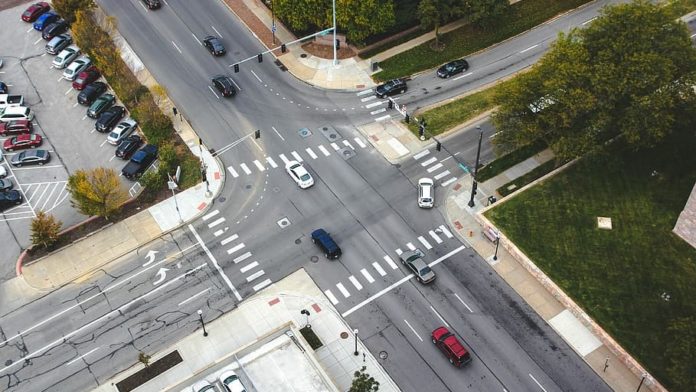The design of intersections and the flow of vehicles and pedestrians through them can make certain roadways into hotspots for accidents. For every actual collision, there can be around a hundred near misses, but it would be impossible to manually monitor entire cities to detect them. AI-based analysis of traffic video could help make the necessary adjustments to make roads safer.
Miovision is a Canadian company whose AI system can thoroughly understand the environment local to an intersection and deliver reliable and clear insights. The technology analyzes the presence and movement of vehicles, cyclists, and pedestrians in real time and the data can be used to reduce congestion and increase safety.
Today, they operate from offices in Kitchener, Ont. and Cologne, Germany, and serve over 17,000 municipalities worldwide.
The TrafficLink Solution
Traffic data are typically collected via video, but the current crop of detection and analytics solutions are often not up to the task. This tech can also be compromised by bad weather or a minor shift in the camera’s position. Thanks to advances in a type of AI called Deep Learning, a new wave has arrived, and Miovision’s TrafficLink is at the forefront.
The TrafficLink platform includes a 360-degree fisheye camera, an Internet of Things hub that enables remote access to the intersection, and an AI brain known as SmartSense.
“To describe it in human terms, the TrafficLink solution represents the eyes and brains of an intersection,” said Dave Bullock, VP of Product Strategy, to Business Wire.
“It can effectively see and understand what’s happening, respond with the appropriate actions, and use the insights gained to optimize the intersection for traffic flow and safety.”
Prior to launch, Miovision spent a decade gathering video traffic data, and their repository now features over seven billion vehicles along with 770 million cyclists and pedestrians. Putting together such an exceptionally large library was necessary because Deep Learning requires huge amounts of data to properly train the AI.
TrafficLink is now intelligent enough to identify the movement of various road users and deliver insights including the travel length during peak traffic hours and hotspots for jaywalking. Even with poor lighting, glare, or adverse weather like snow or rain, TrafficLink can keep up.
Safety-wise, Miovision has been upping the ante in places like Detroit, where they have installed numerous TrafficLink units at intersections. These installations provide city officials with pedestrian-centric safety analysis metrics that they can use to act preemptively.
Being able to plan ahead is a key advantage for traffic teams. They typically use crash data to assess the safety of an intersection, but it can take years to gather enough data before measures are enacted. Meanwhile, people are being injured, or worse.
“We know that for every crash there are 100 near-misses, and for every near-miss, there are 100 or more dangerous actions or safety hazards,” wrote Matthew Trushinski in a Miovision blog post.
“[TrafficLink units] can tell you almost as much about a road hazard as crash data. This new field of surrogate safety data will allow cities to quickly identify where dangerous intersections are before anyone gets hurt. It also means being able to quantify the changes made to solve these problems with before and after safety studies,” he added.
Milton: A Case Study
Milton, Ont. struck a deal with Miovision a few years ago to deploy TrafficLink in response to downtown congestion issues. At two major intersections, drivers were increasingly frustrated by haphazard waiting times, often having to trudge through multiple light cycles to pass.
The city discovered that irregular signal lengths were the crux of the issue thanks to Miovision’s input. A straightforward adjustment to signal lengths during rush hour dramatically changed the situation.
“Within four weeks of installing the system, town staff were able to identify the cause of poor traffic progression, implement a solution and measure the impact of their corrective actions, all from a comprehensive, web-based portal,” said Heide Schlegl, Manager of Traffic for the Town of Milton, to Business Wire.
“For years, cities have been asking us to help them improve traffic flow, make streets safer, and reduce congestion,” said Bullock. “Because our AI understands what’s happening at the roadside, we can now confidently help cities answer those requests.”
Milton is currently in the process of deploying a TrafficLink unit at every major intersection in the town over a five year period.
Investment and future
Miovision announced a further $120 million investment at the start of 2020 in a funding round led by TELUS Ventures. The investment will help Miovision to expedite the growth of their platform, and they plan on hiring upwards of 100 people to help with the development of new products.
“This funding round will help Miovision realize its goal of becoming the platform by which cities everywhere measure, manage and optimize traffic,” commented CEO Kurtis McBride to BetaKit.
“I’m proud that our investors, including a world-leading communications company like TELUS, are as excited about our vision as we are and want to be a part of it.”








































